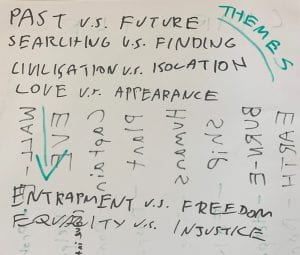Source for Video: The Dark Knight — Creating the Ultimate Antagonist (2016). The Dark Knight — Creating the Ultimate Antagonist. [online] YouTube. Available at: https://youtu.be/pFUKeD3FJm8.
Summary:
- The reason the antagonist of The Dark Knight is so effective, is primarily because Batman and the Joker are both working towards the same goal; to win the battle for the soul of Gotham. However, they have different interpretations of what that soul should be. One fights for order, one fights for chaos. John Truby states that this is the best way to create true conflict, and a conflict that will arise until the end of time, or one of their lives.
- The Joker turns Batman’s strength into a weakness, because he doesn’t fear death. He knows that Batman’s morality is intrinsically tied to his one rule, he will not kill, and, since he doesn’t care about death, turns it into a weakness. The only way for Batman to stop the Joker is to kill him, but that is exactly what he wants, because if he breaks Batman’s morality, he knows he will have broken him as a person.
- The Joker exploits this to pressure Batman into difficult choices. For example, the more people the Joker kills, the heavier Batman’s own inaction will weigh his conscience, and Batman is forced to constantly ask himself whether it would be better for Gotham if he just broke his rule, just once. He also makes Batman decide whether his identity is worth the lives that Joker has promised to end if he doesn’t give it up.
- Through his presentation of difficult choices, the Joker reveals what Batman is not willing to give up to save Gotham when he has him choose between Rachel Dawes, his love interest, and Harvey Dent, a figure that could potentially save the city. He chooses Rachel, thus revealing one of the deepest parts of his character. We only know this about him because of the Joker.
- Finally, he teaches the protagonist a lesson. Batman begins the film thinking that criminals are all able to be understood, that they have a clear motivation, usually for money or some other sort of personal gain. And at first, he tries to put the Joker into this box. However, the Joker has no motivation other than chaos, to ‘upset the established order’. He is a different type of enemy for the dark knight, and Batman has to evolve to fight him.


